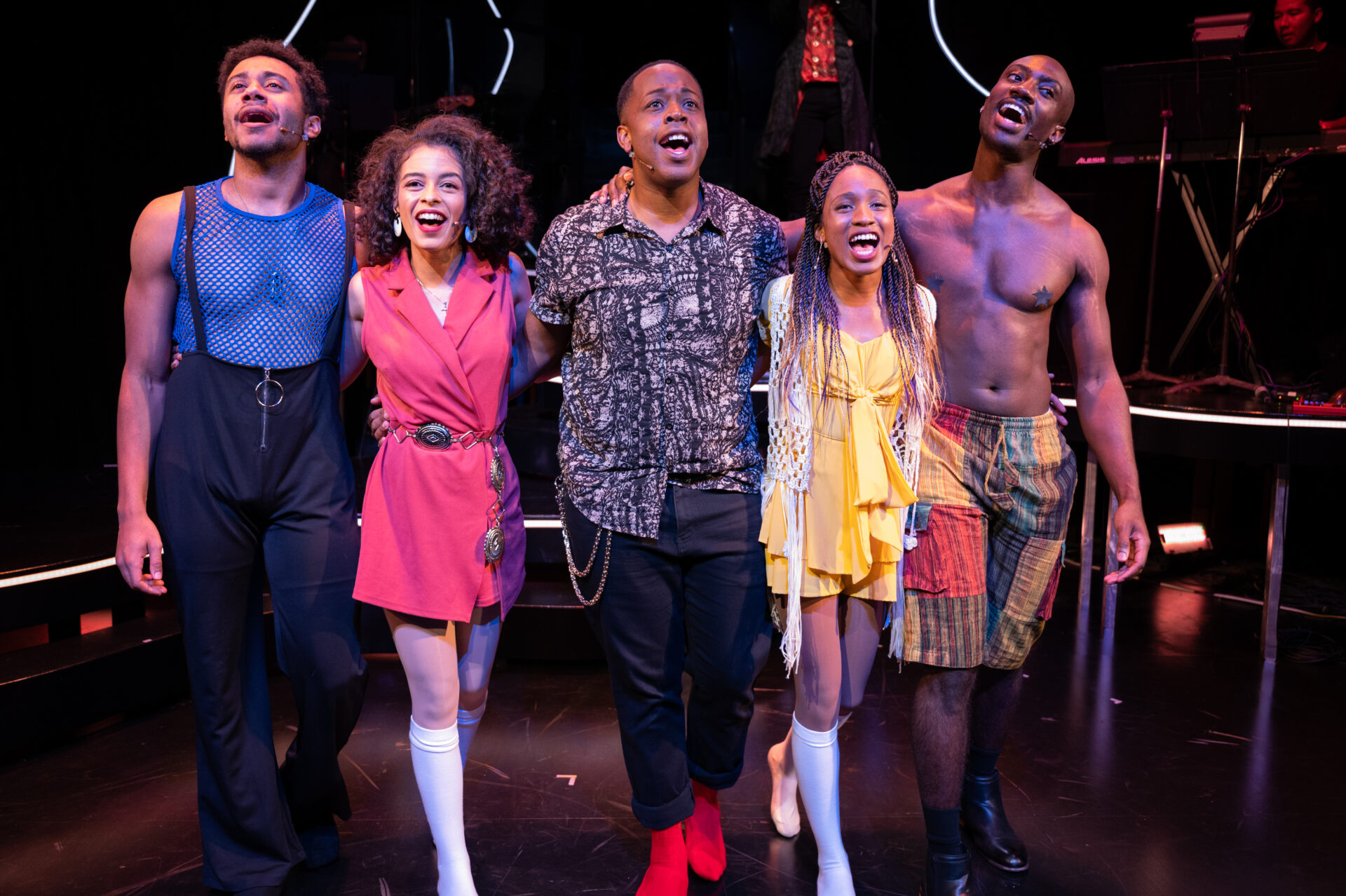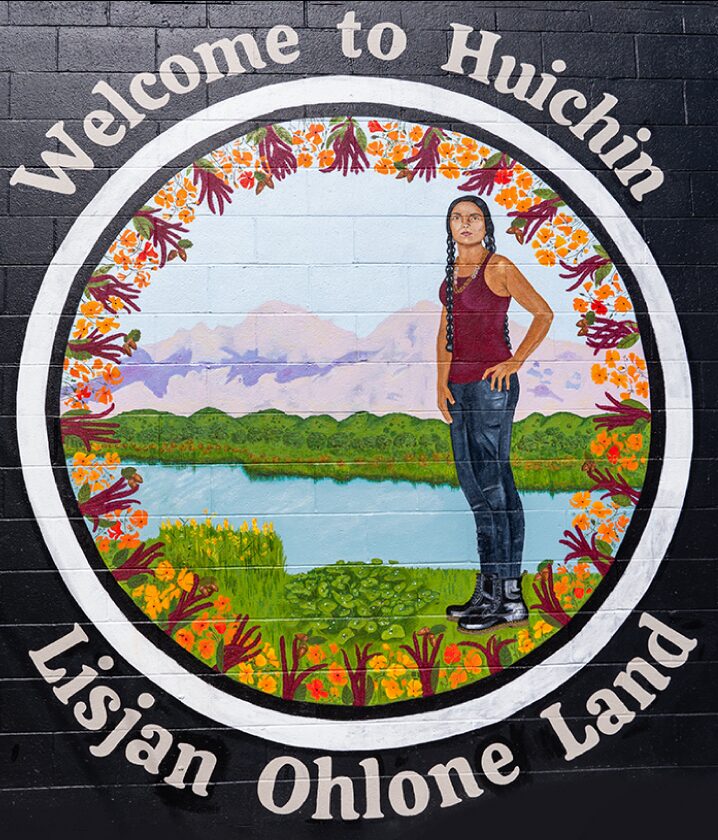
EDIB
Equity
Diversity
Inclusion
Belonging
Our commitment to an inclusive community takes center stage at Shotgun Players. Explore how we champion EDIB (Equity, Diversity, Inclusion, and Belonging) principles and strive to make our spaces affordable, accessible, and free of bias and injustice.
our edib values
Accessibility
We create a theater experience that is inclusive of patrons and artists of all abilities. Specific accessibility initiatives this year include assisted listening devices, audio description, Haptic tours, and WCAG AAA web accessibility.
Diversity in Stories & Storytellers
We commit to “shift the spotlight” so we can showcase the excellent work of marginalized communities and to prioritize intersectional identities and stories in our productions.
Nonviolent Communication
We provide staff and company training in NVC, so we can offer a safe environment for communication and address assumptions that cause harm in our interactions.
Our Initiatives
Discounted Tickets & Memberships
We make the theater we produce accessible to anyone, regardless of their economic status. We offer many opportunities for discounted tickets including: a full week of pay-what-you-can performances at the beginning of each production and discounted tickets for working artists, people 25 years old and under, and anyone in the community who expresses a need. Learn more here.
The Make a Difference (MAD) Program
The MAD Program provides opportunities for emerging and early career theater artists and audiences to enjoy and engage with the transformative power of live theater creation and performance. The core of the program is $12 tickets for folks 25 years old and under, and paid fellowships on our Mainstage productions. Visit our MAD page for more information about the program.
Accessible Facilities & Policies
The Ashby Stage is equipped with a wheelchair-accessible entrance and seats available for every performance. Patrons may also request special accommodations if they have hearing, sight, mobility, guide dog, or other access needs. Visit our accessibility page for more information.
Gender-Inclusive Restrooms
Every restroom at the Ashby Stage and in our rehearsal studios is all-gender. Why did we do this? We want to make our facilities accessible to people of all gender identities. Signage outside the door identifies the facilities in each restroom.

Shotgun Players’ land acknowledgement mural, painted by Geralyn Montano on the west wall of The Ashby Stage
land acknowledgement
In the spirit of humility and respect, we request that you join us in acknowledging that the land beneath our theater, our studios, and throughout the East Bay, is Huchiun [who-CHIN], the traditional, unceded land of the Lisjan [lih-SHAWN], Ohlone people.
This land was taken by force by Spanish, Mexican and U.S. armies and militias. Because we make theatre that calls us to reexamine our lives and the world around us, we believe it’s important to acknowledge this truth so everyone who lives here can think about what it means to benefit from this legacy. Sitting with this knowledge can be uncomfortable.
One way to move towards a place of healing is to join in the work of restorative justice. Our company is taking direct action by paying the Sogorea Te’ Land Trust an annual Shuumi Land Tax. “Shuumi” means “gift” in Chochenyo, the language of the Lisjan [lih-SHAWN]. The funds are used to facilitate the return of Bay Area native land to Indigenous stewardship and to help revitalize rich cultural practices and spiritual traditions that were lost in colonization.
To learn more about the Sogorea Te’ Land Trust, please visit sogoreate-landtrust.org.
The Shotgun Players EDIB Committee
The Shotgun Players EDIB Committee includes members of staff, company, board, and other community artists. The EDIB Committee works closely with the staff and outside consulting firms to further our commitment to anti-racism and the rejection of white supremacy. We aim to move the organization forward by focusing on—and improving—equity, diversity, inclusion and belonging in the following four areas:
- The stories that we tell and the people who write them.
- The composition of the company, staff, and board, ensuring our decision-making processes are inclusive and equitable.
- The artists, technicians, and collaborators that make the work we put on our stages and in our spaces.
- The audience that comes to experience and participate in our work.
We’re committed to:
- Fostering a spirit of ambition, innovation, risk-taking, and reflection.
- Creating ever more inclusive and accessible experiences.
- Cultivating ever stronger relationships with our whole community.
anti-racism commitment
We acknowledge that Shotgun Players is still a predominately white organization that has benefited from systems of white supremacy in its many manifestations. We are driven to use the privilege of our organization not only to be allies to historically oppressed communities but also to dismantle the hierarchical structures of oppression. We are working hard to make our theater safe and more inclusive for staff, artists, and audiences. Our EDIB Committee aims to move the organization forward by focusing on—and improving—equity, diversity, inclusion and belonging in the following areas:
- The stories that we tell and the people who write them.
- The composition of the company, staff, and board, ensuring our decision-making processes are inclusive and equitable.
- The artists, technicians, and collaborators that make the work we put on our stages and in our spaces.
- The audience that comes to experience and participate in our work.
We’re committed to:
- Fostering a spirit of ambition, innovation, risk-taking, and reflection.
- Creating ever more inclusive and accessible experiences.
- Cultivating ever stronger relationships with our whole community.
racial equity action plan
SHOTGUN’S RESPONSE AND COMMITMENT TO THE WSYWAY DEMANDS & BIPOC EQUITY ACTION PLAN
Shotgun Action Plan: Racial Equity
May 18, 2023 In July of 2020, a cohort of BIPOC (Black, Indigenous, and People of Color) theater artists published an open letter to the national theater community entitled We See You White American Theatre (WSYWAT), which was paralleled by a local movement that became the BIPOC Equity Action Plan. In this letter, they called out the history of white privilege, systemic bias, and racism that are woven into the fabric of the American Theater. Shortly thereafter, they published a comprehensive list of expected changes to every aspect of the the industry (marketing, fundraising, outreach, hiring/casting, board and work culture, etc). In acknowledgement that these changes need to happen, Shotgun’s staff began weekly meetings to discuss each item on the list, and how to implement them within our organization in a way that could make visible, long-lasting change.
The WSYWAT BIPOC leaders spent immeasurable energy creating a roadmap for our community, and more importantly, they have spent years enduring bias and injustice in a culture that prided itself on progressivism. These demands are a gift to the American Theater. Our task is to employ the same rigor and tenacity we bring to art making to this revolution in our field.
The board, staff, and company of the Shotgun Players spent the fall and winter devising our action items and building them into our budget and five year strategic plan. This page of our website will keep a running list of actions that are in practice, and those that are in process. We say “in practice” because we recognize the work furthering inclusion and equity – like theater training and development – is ongoing. We also believe that our ability to create meaningful, potent, theatrically magnificent work is intrinsically tied to the health and well-being of artists and audience members who are treated with dignity and respect. Thank you for joining this next chapter in our work. Check back to this page every three months for updates to our action plan.
TRAINING
Our board, staff, and artistic company members are the ambassadors and first level of engagement with our wider community. They should model and uphold the highest standards of communication and behavior. To ensure that happens, we offer the following regular training sessions.
Moderator – All post-show discussions will be led by people who know how to navigate challenging subject matter with audiences with varying levels of cultural competency. They will know how to call up/in microaggressions and moderate or stop conversations that could cause harm. (In practice)
Bystander/Deescalation – Board, staff, and artistic company will all receive training so they can respond to microaggressions in our work and public spaces. (In Practice)
Sexual Harassment – All administrative and artistic employees receive training before beginning contractual work, and then semi-annually. (In practice)
Non-Violent Communication – Board, staff, and company will receive NVC training to create a culture of clear and direct communication. (In practice)
Anti-Bias – All employees receive this training before beginning work with our company. (In practice)
INTERNAL & EXTERNAL OVERSIGHT
In order to establish and maintain an environment of trust and safety, all employees and audience members must know there are multiple ways to offer feedback or seek help.
Feedback Structure – In 2020, we did a complete overhaul of our internal and external feedback and incident reporting structure, to create better pathways, more ways to report, and to offer greater clarity around the process, as well as enhanced confidentiality. We have established a “feedback@” form so anyone from our community may seek information and/or support. (In practice)
Hiring & Work Culture Audit – In the summer of 2020, we hired an outside BIPOC-led HR firm to conduct an audit of our hiring and work culture with all artists and staff. Survey results were used to strengthen and evolve our anti-bias policies and procedures and feedback and incident reporting structures. We will continue to collect feedback through worker experience surveys at the end of each season and from post-production surveys throughout the year. (In practice)
HIRING & CASTING
New policies and procedures address the systemic bias and microaggressions that have happened in predominantly white institutions like our own.
Our annual budget has expanded to include culturally competent hiring and casting support. (In practice)
In line with our value to “shift the spotlight,” our goal is to hire over 50% Black, Indigenous, and People of Color for seasonal artistic, technical, and stage management positions, as well as permanent administrative roles, until BIPOC workers’ representation at our company matches their percentage in the local Alameda County labor force. (In practice)
Our board of directors continues to focus on recruiting diverse members who represent the community we serve. 54% of our current board members identify as BIPOC, among other diverse identities. (In practice)
Include an anti-racist, work culture statement on all job descriptions, agreements and contracts for artists, administrators, and new board members. (In process)
WORK CULTURE
Non-profit organizations have struggled for years to align their service-oriented purposes with using the top-down business models of for-profit organizations. Our new model is inspired by consensus-based decision making using a clearly defined proposal process, committee/task-force system of distributed leadership, improved communication practices, and a healthier work-life balance.
Our rehearsal and tech process will shift from a six day work week to a five day work week, with the elimination of “10 out of 12” days. (In practice)
All arts programming decisions that impact the wider organization will be evaluated after a full proposal has been approved through consensus. (In practice)
COMMUNITY ENGAGEMENT
We pay a Shuumi Land Tax each year to support the work done by Urban, Indigenous women of Sogorea Te’ Land Trust to rematriate the land and support our community. (In practice)
In 2021, we hired local Indigenous artists to design and paint a street-facing mural honoring the history of this land. We will honor other BIPOC communities that call this land home with other artistic and historical projects in our lobby, program, pre-show speeches, and on our website. (In process)
We will continue to offer pay-what-you-can admission to the previews of each show. We added reduced price “Community Tickets” that will be available throughout the run of each show. (In practice)